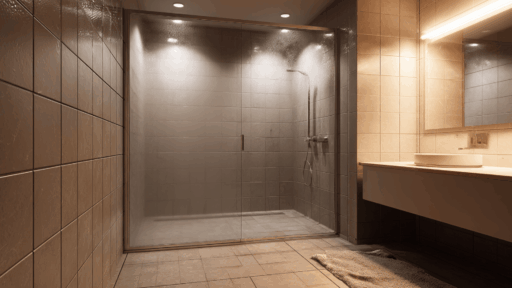In today’s connected world, home security is no longer limited to locked doors and motion sensors. Thanks to advancements in artificial intelligence, face detection cameras have emerged as one of the most intelligent upgrades for modern households. These devices don’t just record footage they learn, adapt, and automate.
With smart homes becoming more intuitive and personalized, 2025 is proving to be a landmark year for facial recognition technology. Here’s how face detection cameras are transforming the way we live, protect, and interact with our spaces.
1. Instant Recognition of Family, Friends, and Visitors
A face recognition camera can identify familiar faces and distinguish them from strangers in real time. This enables smart homes to respond differently depending on who’s at the door.
For example, when your kids arrive home from school, the system can automatically unlock the door and send you a notification no more lost keys or waiting outside.
In contrast, unfamiliar faces trigger alerts, letting homeowners react instantly through a connected app. Advanced solutions from companies like Coram make this possible by offering AI-driven face recognition technology that integrates effortlessly with your existing smart home setup.
2. Smarter, Context-Aware Home Automation
Facial recognition isn’t just about security, it’s about personalization. Imagine your home adjusting lighting, music, and thermostat settings based on who walks in.
Face detection cameras can trigger pre-set automation routines. When you walk in, lights can dim to your preferred level, your favorite playlist starts playing, and the thermostat adjusts to your comfort.
This level of contextual intelligence is redefining what it means to live in a smart home.
3. Enhanced Package and Delivery Monitoring
With the rise of doorstep deliveries, porch piracy has become a growing concern. Face detection cameras integrated at the front door help by recognizing regular delivery personnel and logging drop-off events with timestamps and facial records.
Some systems can even trigger voice prompts thanking the courier or guiding them where to safely leave packages.
Additionally, homeowners can receive alerts only when unfamiliar individuals linger too long, reducing unnecessary notifications.
4. Advanced Intruder Detection and Threat Differentiation
Traditional motion-activated cameras can’t tell the difference between a dog, a shadow, or an actual intruder. But facial recognition-equipped cameras can.
These systems go beyond simple detection. They compare facial features against a database of known individuals and flag suspicious entries.
In 2025, some cameras even integrate with local law enforcement watchlists (with consent) for added layers of safety.
This leads to faster and more informed responses during potential break-ins.
5. Parental Control and Monitoring
Face detection is also helping parents stay informed about who their children are interacting with especially when they’re home alone.
Indoor cameras can send alerts when someone enters your child’s room or detect whether the babysitter or tutor has arrived on time.
More advanced systems offer emotion analysis, helping parents recognize signs of distress or anxiety, which can be crucial in ensuring a supportive home environment.
6. Hands-Free Access with Facial Unlocking
No more fumbling for keys or typing codes. With facial recognition, entry becomes seamless and secure.
Smart locks now integrate with face detection cameras to provide biometric access. When your face is verified, the door unlocks automatically just like in sci-fi movies.
In 2025, this feature is increasingly popular for elderly homeowners, children, and even individuals with disabilities, enhancing both security and accessibility.
7. Privacy Controls and Data Management
Early concerns about facial recognition centered around privacy, and rightfully so. But new-generation systems in 2025 come equipped with robust privacy controls.
Users can customize who is stored in the facial database, set data retention periods, and enable end-to-end encryption. Some cameras offer “privacy zones,” where detection is disabled entirely.
Brands have begun placing transparency at the forefront, giving users control over how data is used striking a balance between security and trust.
Final Thoughts
Face detection cameras are more than a security upgrade; they’re the brain behind the truly intelligent home. Whether it’s unlocking doors, analyzing emotions, or personalizing routines, this technology is redefining convenience and safety in 2025.
As smart homes evolve, devices that understand who is interacting with them not just what will become essential. If you’re looking to elevate your home’s intelligence, face detection cameras are no longer a futuristic luxury, they’re a practical necessity.








